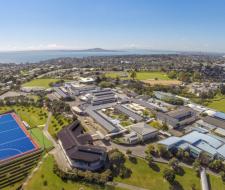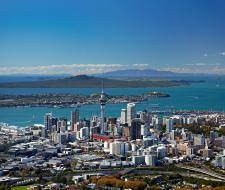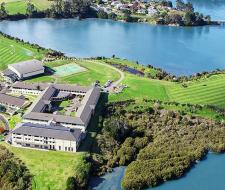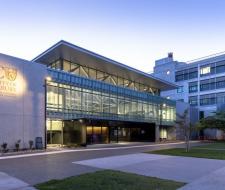Primary, secondary education in New Zealand for international students
-
 from 34280.00 $NZD / yearApply with documents
from 34280.00 $NZD / yearApply with documents -
 from 20850.00 $NZD / yearApply with documents
from 20850.00 $NZD / yearApply with documents -
 from 29800.00 $NZD / 4 semestersApply with documents
from 29800.00 $NZD / 4 semestersApply with documents -
 from 23200.00 $NZD / yearApply with documents
from 23200.00 $NZD / yearApply with documents -
 from 25500.00 $NZD / yearApply with documents
from 25500.00 $NZD / yearApply with documents -
 from 16280.00 $ / yearApply with documents
from 16280.00 $ / yearApply with documents -
 from 29050.00 $NZD / yearApply with documents
from 29050.00 $NZD / yearApply with documents -
 from 35800.00 $NZD / yearApply with documents
from 35800.00 $NZD / yearApply with documents -
 from 1638180.00 ₽ / yearApply with documents
from 1638180.00 ₽ / yearApply with documents -
 from 1753140.00 ₽ / yearApply with documents
from 1753140.00 ₽ / yearApply with documents
Alternative destinations
Education information
Nowadays, education in New Zealand provides a great opportunity to choose any elite university in the world. In New Zealand, the school system includes just over 400 institutions, but only 20 of them are private. The state strictly regulates the programs and the educational system, so educational services provided by schools and colleges in New Zealand are high-quality. At the same time, the cost of studying is 20-30% lower than in secondary schools in Britain. Due to the list of 7 best schools and colleges in New Zealand, foreign students can find the most appropriate option.
Secondary Schools in New Zealand. Guide for international students
New Zealand's education system is meticulously structured, catering to students' varying needs and aspirations. Typically, children begin their primary education journey around the age of 5-6, continuing until the 8th grade (around 13 years of age). Thereafter, they transition to secondary schools in New Zealand, where education extends until the age of 16. This phase is often referred to as attending middle schools in New Zealand.
Following their time in middle school, students are presented with options. They can either pursue advanced studies akin to the British A-level or opt for vocational courses in colleges.
Upon completing grade 11, every student is awarded a School Certificate. Those who extend their studies to the 12-13 year mark can obtain the NCEA Level I. This qualification aligns with the quality standards of the High School Diploma in the United States and the British A-level.

What would you say is the most important when choosing a school?
This is the quality of support and work of the management, the opportunity to study at IB, the prestige of the school and the percentage of successful completion of the diploma stage of IB, recommendations for further universities. It is worth considering the national "recruitment" of campus students, opportunities for extracurricular development and activities, the availability of medical services and consultations, opportunities for language immersion. Is education at the chosen school based on the values you share? Is the school a close-knit community? Is academic support good?
Secondary schools in New Zealand. Cost and Fees for International Students
When it comes to fees, public schools generally charge international students a bit less than private boarding schools. Attending a private institution for one quarter might cost anywhere between $5,000 to $9,000 New Zealand dollars. To increase their odds of being admitted to the best schools in New Zealand, many foreign students enroll in preparatory courses, like language programs.
The top schools in New Zealand offer a curriculum spanning over 30 disciplines, with core subjects like foreign languages, English, and mathematics taking precedence. Elective courses, such as journalism, radio electronics, art, and accounting, are also available.
For international students hoping to join the ranks of schools in New Zealand, several prerequisites exist. Schools often request a report card, an English proficiency test (focusing on reading and comprehension skills), two references from their previous school, and an essay discussing their motivations for choosing that particular institution. Achieving a TOEFL score of at least 500 points is also commonly required. Many experts advise foreign students to undertake comprehensive English courses to bolster their chances further.
Unlike the British system, New Zealand doesn't rigidly segregate students based on age. For international students, planning is crucial. The process of document verification and submission can span 3-4 months. Some private institutions might even send proficiency tests in specific subjects to prospective students. Additionally, visa processing can add another two months to the wait.
To aid your search, consider referring to a list of schools in New Zealand or consulting a schools in New Zealand ranking to find an institution that aligns with your academic and personal goals.
How to apply to Secondary Schools in New Zealand for foreign students?
New Zealand, known for its picturesque landscapes and quality education system, is an increasingly popular destination for international students at the secondary school level. The country's educational institutions offer a well-rounded curriculum, coupled with a holistic approach to learning and development. For foreign students considering New Zealand for their secondary education, here's a concise guide on the application process:
Research and Selection: Before delving into application specifics, it's essential to research and shortlist secondary schools in New Zealand that align with the student's academic and extracurricular interests. Factors to consider include the school's academic performance, location, available facilities, extracurricular programs, and any specific courses or areas of specialization. Some schools in New Zealand also offer the International Baccalaureate (IB) program, which might be of interest to some international students.
Application Requirements: Once a school or a set of schools is shortlisted, the next step is to gather the necessary application materials. Typically, this includes the student's academic transcripts, letters of recommendation, proof of English language proficiency (such as IELTS or TOEFL scores), and sometimes a personal statement or essay. New Zealand secondary schools might also require an interview, which can often be conducted online or over the phone for international applicants.
Visa and Immigration: Upon acceptance, foreign students will need to secure a student visa to study in New Zealand. The process involves submitting an application to Immigration New Zealand, accompanied by the offer of placement from the school, proof of paid tuition fees, evidence of sufficient funds for living expenses, and a medical and travel insurance certificate. Ensuring timely visa application is crucial, as delays can impact the student's start date.
In summary, applying to secondary schools in New Zealand as a foreign student involves meticulous planning and adherence to specific requirements. However, the reward is an enriching educational experience in one of the world's most beautiful countries, making the effort well worth it.
What is secondary education like in New Zealand?
What is the structure of secondary education in New Zealand?
What subjects are included in secondary education in New Zealand?
What are the entry requirements for secondary school in New Zealand?
What is the grading system in secondary education?
Can I choose the items at my discretion?
What additional facilities do secondary schools in New Zealand provide?
How many hours a week do students study in secondary schools?
Can international students study at secondary schools in New Zealand?
What opportunities does secondary education provide for entering university?
Learning programs-summary information
| Name | Meaning | Equivalent | Min. age | Duration, years |
Next stage | Cost |
|---|---|---|---|---|---|---|
| GCSE | General certificate of secondary education | secondary education (non-accomplished) | 14 | 1–2 | A-Levels | 15,000 USD+ |
| A-Levels | Advanced level | secondary education (accomplished) | 16 | 2 | University | 15,000 USD+ |
| BTEC | Business and Technology Education Board | secondary special education | 14 | 2–3 | University/ work | 15,000 USD+ |
| Oxbridge Preparation | Preparing for Oxford and Cambridge | secondary education (accomplished) | 17 | 1 | University | 15,000 USD+ |
| International Baccalaureate | International baccalaureate | secondary education (accomplished) | 16 | 2 | University | 18,000 USD+ |
| Foundation/ Pathway Year | Preparatory year | admission to the 1st year of university | 17 | 1 | University | 14,000 USD+ |
| NCUK | The Northern consortium | 2 year university | 17,5 | 1 | 2 year University of NCUK | 13,000 USD+ |
| Special Preparation (Medics/Math/Business) | Specialized training | - | 14 | optional | optional | 4,000 USD+ |
| Academic English | Academic English | Language school | 8 + | 6–12 months | School or University | 8,000 USD+ |
Advantages and disadvantages of English schools
| Advantages | Disadvantages |
|---|---|
| The opportunity to enter the best universities in England, USA, Canada, Switzerland, Europe, the world | Expensive |
| High quality of education and academic standards | Strong workload |
| Perfect English after graduation | The need to change the social environment; it takes time to adapt |
| Useful contacts | The difficulty of choosing the most suitable school for the child, requires a qualified specialist |
Top 21 boarding colleges in England 2024
| 1 | Cardiff Sixth Form College |
| 2 | National Mathematics and Science College |
| 3 | Abbey College Cambridge |
| 4 | d'Overbroeck's College |
| 5 | MPW London |
| 6 | CATS Cambridge |
| 7 | Kensington Park |
| 8 | DLD London |
| 9 | King's College St Michael’s |
| 10 | Bellerbys Cambridge |
| 11 | Chelsea Independent College |
| 12 | MPW Cambridge |
| 13 | Bellerbys Brighton |
| 14 | CATS London |
| 15 | St Clare's Oxford |
| 16 | Bishopstrow College |
| 17 | CATS Canterbury |
| 18 | Bellerbys London |
| 19 | Ealing Independent College |
| 20 | Cambridge Tutors College |
| 21 | Abbey Manchester |
Literature and references
- Guide to Education & International Schools in New Zealand
- New Zealand tops English-speaking countries in Educating for the Future ranking
- New Zealand — Cambridge International Education
- Educational System in New Zealand
- The school system: New Zealand Education
- Qualifications and their levels
- Education in New Zealand
- Secondary schools in NZ



